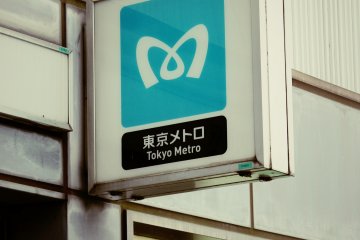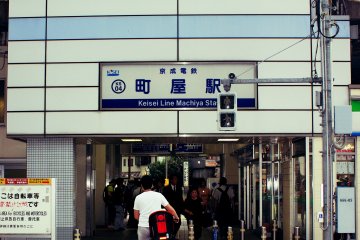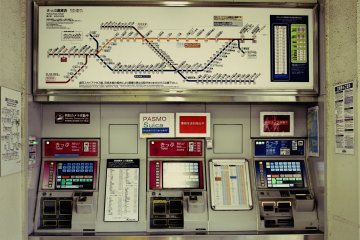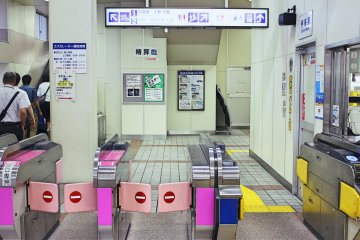The Tokyo Metro can be really confusing at first. The different lines and companies do not make it easier. However, after some time you will appreciate how fast, easy to use, and well organised it is. Its cleanliness and punctuality make it one of the best means of transport in Tokyo.
Basic Information
In Tokyo, there are a lot of companies operating the metro and metro-like trains. This means that sometimes you would have to buy a separate ticket if you want to change for a different line or take a shorter route. A good option is to get a 24/ 48/ 72 hour ticket, depending on how long you are planning to stay in the city. They cover most of the subway companies and allow you to visit the majority of tourist attractions. If you are thinking of staying longer, going for one day trips out of town or using a bicycle to explore the city, it is better to buy the tickets as you go. You would be pleased to know that trains come exactly on time. The schedule is strictly respected and if your train is late, you can get a note from a metro worker which would confirm that you could not get to work on time. For the Japanese, punctuality is very important. You might also want to check the time of the last train before heading out for a drink in the city. Most of the trains stop running a little after midnight.
Buying the Ticket
If you arrive to Tokyo by air, you can buy your metro ticket at the airport. Forget about taxis. Subway connections are very good and trains can take you to wherever you want to go fast. You can ask for help at the tourist information centre at the airport, located just after you exit customs. Payment is by cash only, so you would need to have few hundred Japanese yen prepared ahead of time. The money changer and ATMs are just nearby, so do not worry if you have only foreign currency. The airport tourist information desk sells 24, 48 and 72 hour tickets, which are the most popular among tourists. If you are not sure how long you want to stay, you can just buy a single ticket to your destination. For that, you would have to get friendly with ticket vending machines. You can ask the information desk staff to help you, but it is easy enough to try it yourself. Ticket machines are quite simple to use and they are exactly the same at every subway station. Unless you are familiar with Japanese, the first thing to do is to change the language to English. When you do that, everything suddenly looks so much easier without the unfamiliar Japanese characters. Then you can select the number of passengers from the line on the left. The types of tickets are displayed with the prices which indicate the distance. The longer the distance, the higher the price. You will know the price of your ticket, by taking a look at the fare chart located close to the machine. It has every station listed with its ticket price. You can also buy tickets to your destination without finding the fare by using the feature 'Search by a station name' or 'Search by a station number'. Other icons allow you to buy transfer tickets for JR and other railway lines. After that, you put the money in and get a your ticket along with your change. Then you just need to find the right entrance, get on the train that goes your direction and use your ticket again when getting out of the subway. If you have made a mistake with your ticket price and the gate does not open for you, no problem. You can find the metro worker and pay the extra amount that is missing. Whenever you are lost, do not hesitate to ask locals for directions. They will do their best to help you.
Following the Arrows
Inside the subway you basically cannot get lost. The Tokyo Metro has done a great job to ensure that everyone gets to their destination. Just look up and you will find illuminated signs showing you to your metro line. Follow the arrows to your route or to find your transfer. It is best to remember the colour and the name of a line you want to take or change for. You will find helpful guides and metro maps at the entrance of the subway. Inside the train, you will see the name of the next station on the screen above each door. If you still happen to miss your stop, you can always go back to the station you wanted, without paying any extra charge.
Metro Etiquette
Japanese people are very friendly. You can be sure that they will help you get off at the right station and find your way if you are lost. Although they are understanding and kind, there are some things that might upset them. Japanese almost never eat or drink on the train and they expect their co-passengers to do the same. They do not like it when others talk too loud or when they blow their nose. When getting on the train, you may notice that no matter how crowded it is, people avoid rushing in and pushing each other. Be polite and try to make your way in and out without bumping into other passengers. Whilst travelling on the subway you should never forget about setting your phone to a silent mode. You will notice that passengers avoid having phone conversations during the ride and they always keep their phones silent. During the morning rush-hours, the Tokyo Metro has adopted women-only cars. The designated boarding areas along the platforms are marked with the 'Women Only' signs. Men should be attentive to those and respect that rules. One more thing to remember is that there are priority seats in every Tokyo Metro trains and they should be given to those in need.
Useful Websites and Applications
The Tokyo Metro website offers helpful information on how to use Tokyo Metro and introduces different types of tickets. There is also a free application officially provided by the Tokyo Metro to enable users to search for a transfer information in the Tokyo subway network. Called the Tokyo Subway Navigation for Tourists, it is available in English, Chinese (Simplified and Traditional), Korean and Japanese. Another useful website for finding train connections, not only for Tokyo Metro but also for bullet trains and other train companies is Hyperdia. Free wi-fi is available in 134 stations of the Tokyo Metro. You can find a map of the stations with free wi-fi on this site.











